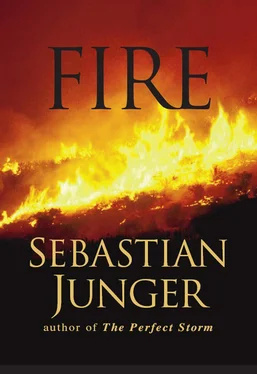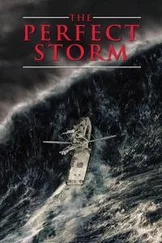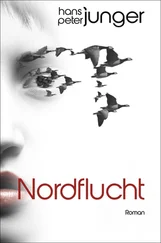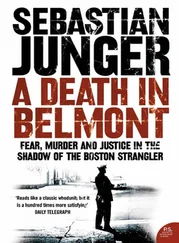I never wrote my book on dangerous jobs; my fascination with those kinds of stories developed into a general passion for foreign reporting. The stories in this book all deal, in one way or another, with people confronting situations that could easily destroy them. I should make it clear that as a journalist I was not in their shoes; I was rarely in serious danger, and I rarely lacked a quick way out. I had my own fears to confront, though. Stepping off an airplane to work in a foreign country is one of the most terrifying feelings I know, not because something bad might happen to me but because I’m convinced that I’m going to fail. You have two weeks to understand a completely alien culture, find a story that no one has heard of, and run it into the ground. It never feels even remotely possible.
But it is. And in the process of doing my work, I have had the honor of witnessing, up close, the awful drama of human events. Like the fire fighters in my old photo, I have found it impossible to turn away.
Annapolis, Maryland, 2001
Late in the afternoon of July 26, 1989, a dry lightning storm swept through the mountains north of Boise, Idaho, and lit what seemed like the whole world on fire.
A dry lightning storm is a storm where the rain never reaches the ground. It evaporates in midair, trailing down from swollen cumulus clouds in long, graceful strands called virga. The electrical charges from a dry storm do not trail off before they hit the ground, however; they rip into the mountains like artillery. On July 26, 1989, lightning was hitting the upper ridges of the Boise National Forest at the rate of a hundred strikes an hour. Automatic lightning detectors at the Boise Interagency Fire Center were registering, all over the western states, rates up around two thousand an hour. By nightfall 120 fires had caught and held north of Boise, little one-acre blazes that eventually converged into a single unstoppable, unapproachable front known as the Lowman fire.
For the first three days Lowman was simply one among hundreds of fires that were cooking slowly through the parched Idaho forests. Around four o’clock in the afternoon of July 29, however, the flames reached some dead timber in a place called Steep Creek, just east of the town of Lowman, and the fire changed radically. The timber was from a blowdown two years earlier and was so dry that when the flames touched it, the entire drainage went up. The fire created its own convection winds, making the fire burn hotter and hotter until the fire behavior spiraled completely out of control. Temperatures at the heart of the blaze reached two thousand degrees. A column of smoke and ash rose eight miles up into the atmosphere. Trees were snapped in half by the force of the convection winds.
The fire rolled across Highway 21 and right through the eastern edge of town, detonating propane tanks and burning twenty-six buildings to the ground. A pumper crew was trapped at the Haven Lodge, and they hid behind their truck and finally stumbled out of the blaze an hour later, safe but nearly blind. The fire had attained a critical mass and was reinforcing itself with its own heat and flames, a feedback loop known as a fire storm. The only thing people can do, in the face of such power, is get out of the way and hope the weather changes.
Which they did, and which it did, but not until a month later, after forty-six thousand acres of heavy timber had been turned to ash.
I saw the site of the Lowman fire in 1992, three years afterward, when the ponderosa seedlings were already greening the hillsides. A roadside plaque said that eight million ponderosa and Douglas fir would be hand-planted by the mid-1990s. The plaque went on to describe how the land had been treated with enzymes so that water and microorganisms could penetrate soil that was now seared to the consistency of hard plastic. Thousands of flame-killed trees had been dropped laterally along the slopes to keep the land from washing away, and thirty thousand acres had been planted with grass and fast-growing bitterbrush. In a hundred years, more or less, the area would again look the way it once had.
I was driving a big, painfully beautiful loop from Ketchum, Idaho, around the Sawtooth Mountains and down the South Fork of the Payette River toward Boise. It was late afternoon when I drove through the Lowman burn, and the quiet darkness of the dead valleys depressed me. The West was well into one of the worst droughts of the century, and I was out there to see the wildfires that it was sure to produce. My idea was to go to Boise—where all the fire-fighting resources were coordinated—tell them I was a writer, and hope they let me on afire.
I pulled off down an old logging road and pitched my tent in a clear-cut. It seemed to get dark very quickly that night, and I cooked spaghetti on my camping stove and went to sleep listening to the weekend traffic die down on Highway 21. The Lowman fire, I’d heard, had burned so hot that Highway 21 had melted. There were places, I’d heard, where fire trucks had left their tread marks as they rushed from Boise to fight the flames.
In 1965 the U.S. government established the Boise Interagency Fire Center to coordinate the three federal agencies—the Bureau of Land Management (BLM), the Forest Service, and what was then known as the Weather Bureau—that were engaged in fighting wildfire in America. The Bureau of Indian Affairs, the National Park Service, and the Fish and Wildlife Service were added later, and the name was ultimately changed to the National Interagency Fire Center. Two years after BIFC was established, the Northern Rockies were hit with a catastrophically bad season that culminated in the Sundance fire in northern Idaho. BIFC managed to deploy thirteen thousand men and thousands of tons of supplies, prompting a study by the Office of Civil Defense, which was trying to figure out how to handle a similar crisis in the event of a nuclear war.
BIFC is located next to the Boise airport, across the interstate, south of town. The lobby is filled with the sort of display that, were you even vaguely inclined toward a job fighting fire, would make you move out west on the spot. There is a smoke jumper mannequin in full jump gear, including a wire face mask for when the jumper goes crashing into the treetops. There is a board with everything—food, medical supplies, tools—a jumper needs for forty-eight hours on a fire. There are color photos of air tankers dropping retardant and sheets of flame rising from stands of trees. One photo shows a fire in dense forest on the Umpqua National Forest in Oregon. “The total-timber jump spot,” the caption reads, “trees in this photo are between 80 and 125 feet tall. Five of six smokejumpers committed to this fire ‘hung up’ in trees, thus the rope carried in the leg pocket for a ‘let-down.’ The fire was stopped at a quarter-acre.”
A short, powerful man named Ken Franz—one of the Boise smoke jumpers, as it turned out—spotted me loitering in the lobby and came over to investigate. I told him I was interested in wildfire, and he motioned me into a cluttered conference room and sat me down at a long table to tell me the basics. Behind Franz was a map of the western United States that covered most of one wall. There were seven red circles on it around seven towns: McCall, Idaho; Boise, Idaho; Missoula, Montana; Redmond, Oregon; Redding, California; Silver City, New Mexico; and Winthrop, Washington. Franz turned and pointed to them.
“Those are the smoke jumper bases,” he said. “We are constantly getting sent from one place to another; you never know where you’re going to be the next day, or the next week. They just shift resources around to wherever the hazard is greatest.”
Читать дальше












